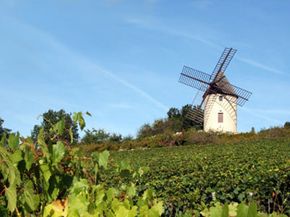Advertisement
When your friend tells you she bought a new burgundy car, you probably know that means it is a shade of the color red. But what if that friend told you she bought a bottle of Burgundy? Would you know that means that she bought a bottle of French wine? Considering what burgundy signifies in terms of color, would you be expecting a red or a white wine? Actually, it could be either one. It may surprise you to find out that the Burgundy wine region actually produces more white wine than red wine. Each year, the Burgundy wine region produces about 180 million bottles of wine. Of those millions of bottles, 65 percent are dry white wine and only 35 percent are red wines [source: Terroir France].
You might wonder how large this region is if it can produce 180 million bottles annually. When you see the Burgundy region highlighted out from the rest of France, it is an unusually shaped region, looking like a long strip of land running north and south. It expands over an area of about 12,000 square miles (31,500 square km) in central east France [source: Saunders].
Burgundy separates itself from other wine regions in France. Rather than being divided mainly between a few large vineyards, the region is divided between several thousand smaller vineyards and growers. Each grower's land varies in size, ranging from small to large. This size difference means that some growers simply focus on one particular wine while others are able to produce a dozen different wines or more [source: Cannavan].
In this article, you will learn about the history and culture of this region, the agriculture behind the great wines and the most famous red and white wines of the region.
Advertisement
